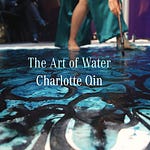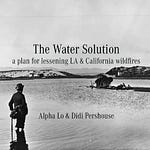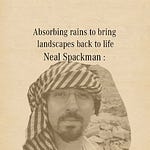When I was first beginning to awaken to the power of water to help restore our landscapes and climate, I stumbled upon Judith Schwartz’s turqouise book “Water in plain sight” in a bookstore, and thought, wow, there are so many wonderful ways we can help restore our water cycles.
Little did I know at that point, that, to my delight, I would actually get a chance to get to know Judith, as I got immersed in the world of regenerative water and started in engaging in a variety of different water projects. It was great to be around the warmth with which she talked about water, and to see the twinkle in her eye about the subject.
Judith pursued her interest in water and our ecology as a journalist, and has documented various ways we can restore our water and ecosystems in her books : “Cows save the planet”, “The Reindeer Chronicles”, and “Water in Plain Sight”, and has published articles in Scientific American, The Guardian, and Yes Magazine.
In this podcast we talk about how animals can profoundly affect the water cycle, and in so doing also help restore our climate. Its an effect thats not often talked about, and that deserves more attention. Feel free to put in comment section your favorite animals that influence the water cycle.
Here’s an excerpt from her book “The Reindeer Chronicles” on how reindeer affect the water, when its in the form of snow, and can thus affect the temperature of the landscape as a second order effect.
“Reindeer can also help maintain permafrost by crushing the snowpack with their hooves, according to Sergey and Nikita Zimov, father-and-son research scientists in Russia. The Zimovs developed a project in the late 1980s, in which they brought herbivores that thrive in arctic conditions—reindeer, moose, Yakutian horse, bison, musk ox, yak, Kalmykian cow, and sheep—to their North Siberia reserve. The goal of Pleistocene Park, as they call it, is to re-create the productive Mammoth Steppe ecosystem that predated human expansion into far northern latitudes. The blanket of snow that cloaks the tundra for much of the year acts as an insulator, and this protects the soil surface from the cold, Nikita Zimov explains in a 2017 interview with PRI’s Living on Earth. “When animals trample down the snow, they actually thin that layer of snow, making it dense, and this allows much deeper freezing during the winter.” This sustained chill can extend snow cover to the spring months, which means maintaining higher surface albedo longer into the year. It also keeps the permafrost frosty, so that the microbial life in frozen soil doesn’t activate and consume organic matter, a process that releases greenhouse gases. In an experiment that compared areas with and without herbivores, the Zimovs found that soil temperature in places where animals grazed was lower by at least 15°C (27°F).”
Judith Scwartz’s website is www.judithdschwartz.com
Awhile back we were making a list of the top 100 ways to restore the water cycle. Some of the items on the list were animals. https://climatewaterproject.substack.com/p/top-100-methods-to-restore-the-water
………………………………………….
This Climate Water Project newsletter/podcast covers many aspects of regenerative water. And some of the ideas build on each other, so you can browse over archives at https://climatewaterproject.substack.com
You can subscribe for free, or you can help restore our water cycles by supporting my work in writing and putting out these newsletters/podcasts, as well as my work on various regenerative water projects, with $5 a month by subscribing. Or you can also help out by supporting me on patreon at https://www.patreon.com/watercology.
Thanks!













Share this post